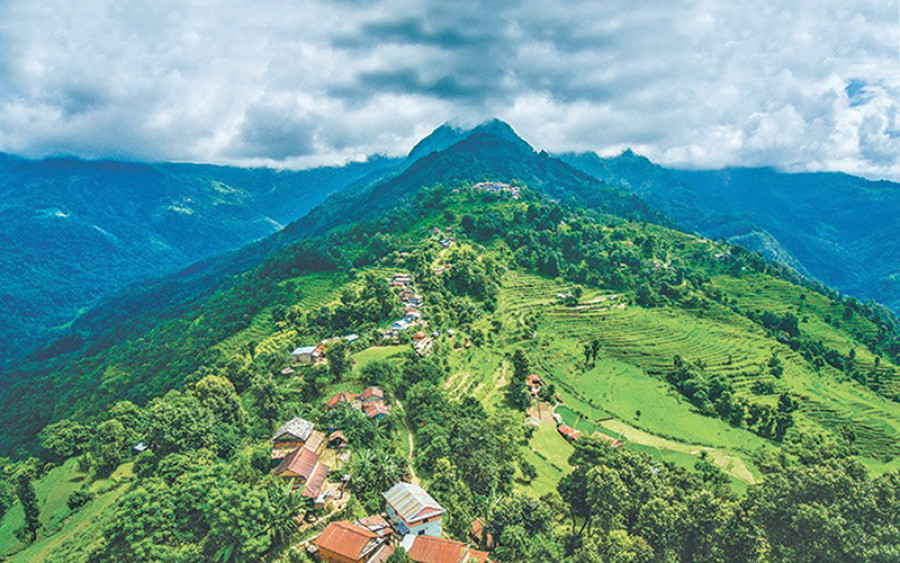Opinion
Mountain economies and BIMSTEC
Inland waterways offer a potential pathway to connect Bhutan and Nepal to the Bay of Bengal
Nilhari Neupane
The Fourth Summit of the Bay of Bengal Initiative for Multi-Sectoral Technical and Economic Cooperation (BIMSTEC) is taking place in a Himalayan country for the first time. Mountains and hills cover around a quarter of the land area of the BIMSTEC member countries, and five of the seven countries—Bangladesh, Bhutan, India, Myanmar, and Nepal lie in the Himalayan region. Although the BIMSTEC region has seen rapid economic and social development in recent decades, mountain and hill areas have lagged behind in most countries mostly due to poor connectivity and accessibility, and limited facilities for cross-border movement. Mountain communities hope that BIMSTEC will be able to transform their economies through better connections to the Bay of Bengal and to regional and global markets beyond.
Connectivity is key
Mountains are crucial for the ecological and economic security and development of the region, especially for achieving the sustainable development goals (SDGs). Mountains in the BIMSTEC region contain the headwaters of five major rivers in the Hindu Kush-Himalaya (HKH)—-Brahmaputra, Ganges, Irrawaddy, Mekong, and Salween. These rivers provide a range of ecosystem services including freshwater for drinking, domestic use, agriculture, energy, and industry. They serve as transport links, and contribute to trade, commerce, industry, and economic growth.
Mountains and hills are also important sources of clean energy for the lowlands, containing most of the region’s existing and potentialhydropower production. Products and services from the mountains and hills form the basis of many economic sectors including agriculture, forestry, pharmaceuticals, rangeland production, tourism, and biodiversity conservation. A large proportion of forests and rangelands are in the mountains and hills, and these areas support climate regulation and carbon sequestration, and help reduce disaster risks by moderating the effects of flood and drought.
While lowland communities depend on mountains and hills for natural resources and ecosystem services, upland communities depend heavily on lowland areas for connectivity, trade, transit and transport facilities. The questions are: how can low land countries support mountain countries to realise their potential, and how can development opportunities arising from regional cooperation be shared among mountain and lowland countries so that they participate equally in and benefit from regional and global economies.
The landlocked mountainous countries of Bhutan and Nepal suffer particularly from poor infrastructure and accessibility as a result of difficult topography. They depend on road transport for regional and international trade and are confronted with several bottlenecks which increase trade costs. A World Bank study showed that Bhutan and Nepal face much higher transportation costs, and require more time and paperwork for exports and imports.
To reap the benefits of cooperation under BIMSTEC, Bhutan and Nepal need to be well connected to the regional economies and gain access to the Bay of Bengal. Inland waterways offer a potential pathway for this. Water transportation is environmentally advantageous and cost-effective compared to other forms of transportation, particularly for bulk commodities. All rivers originating in or flowing through Nepal and Bhutan merge with the Ganges and Brahmaputra in India to ultimately reach the Bay of Bengal through Bangladesh.
The development of waterways has gained momentum following the declaration of 106 additional waterways by India, and amendment to the bilateral navigation protocol between India and Bangladesh in 2015, which allows third countries to use their waterways.This new policy initiative has opened up new opportunities for Bhutan and Nepal to gain direct access to the Bay of Bengal through the Indian National Waterways No 1 and 2.
The possibilities
Realising the opportunities, the prime ministers of India Narendra Modi and Prime Minister KP Oli took a landmark decision in April 2018 to develop inland waterways for the movement of cargo within the framework of trade and transit.The National Waterway-1 of India starts from Hooghly and continues along the Ganges via Farakka, Kanpur, Kursela, Kalughat, and Varanasi and can link with several points in Nepal, such as Chhatra and Bhardaha on the KoshiRiver, Trivenidham on the Gandaki, and Chisapani on the Karnali.
The 165 km Koshi Navigation Canal can link Chhatra in Nepal with Kursela in Biharand thus with National Waterway-1. Nepal could also use multi-modal transport to access the nearby terminals at Kursela and Kalughat in place of Haldia port, which could reduce transportation costs by at least one-third according to a World Bank study.
The extent to which Bhutan and Nepal can benefit from BIMSTEC is largely dependent upon the possibilities for gaining direct access to the Bay of Bengal through waterways.This is also true for mountain areas within the better connected BIMSTEC countries. Northeast India and upland areas of Myanmar and Thailand need to be better connected to sea ports and regional and global markets.
Rasul is the chief economist & Neupane is an economic analyst at International Centre for Integrated Mountain Development (ICIMOD).




 6.12°C Kathmandu
6.12°C Kathmandu











